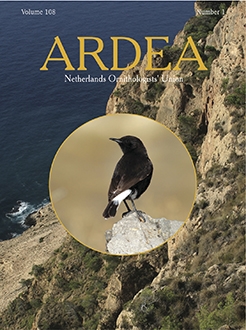The Black-faced Ibis Theristicus melanopis builds numerous nests in some trees but avoids others, suggesting that particular attributes of trees are selected for. In this study we test the hypothesis that the number of primary stems rising from the trunk correlates positively with the number of active nests in this colonial nesting species. Within an area of 61 km2 of pastures in southern Chile, in 2017 we selected 96 isolated trees. For each tree we examined nest presence and breeding status. Of the total number of trees examined, 38 had active nests. The active nests were built solely in Patagonian Oak Nothofagus obliqua and Chilean Laurel Laurelia sempervirens. The nests were mainly located on branches of the primary stems, at an average height of 13.87 ± 0.62 m (±SE; range: 2–27 m). The average number of active nests per tree was 0.82 ± 1.13 (range: 1–4 nests) and did not vary significantly between the two tree species. However, average nest height was significantly greater in the Patagonian Oak than in the Chilean Laurel. Partial least squares structural equation modelling (PLS-SWM) indicated that tree structure, determined by tree age and canopy height, canopy cover and concealment, contributed to explaining the number of active nests in the trees. There was no relation between the number of primary stems and the number of active nests. We conclude that the Black-faced Ibis responded to the general tree architecture when nest building and that, probably, the presence of an active nest in a given tree constitutes key intraspecific information that induces other individuals of the population to build their nests in the same tree.
How to translate text using browser tools
14 December 2020
Do Structural Attributes of Trees Affect Nest Activity in the Black-Faced Ibis Theristicus melanopis?
Miguel Yáñez-Alvarado,
Alberto G. Gantz
ACCESS THE FULL ARTICLE

Ardea
Vol. 108 • No. 2
November 2020
Vol. 108 • No. 2
November 2020
agricultural landscapes
breeding structures
Chile
ibis
structural equation models
tree structure





